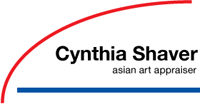I have evaluated a collection of Balinese Batuan drawings by Rudolf Bonnet from the 1920’s, 30’s, and late 40’s. The art came to the client by inheritance and estate planning is in the process.
My scope of work included correspondence with the curators from the San Francisco Fine Arts Museums (both Achenbach Foundation for Graphic Arts at the Legion of Honor and the deYoung Museum) and the Asian Art Museum. Each of those individuals gave me resources to read, and links to books and resources with photos to train my eyes. I listened to docent lectures given at the de Young Museum about Indonesian art in general and read about Balinese art in particular. Before completing, I needed to examine the collections at the Achenbach Foundation. With the observations of another Asian Art expert, I compared the client’s collection with that of local institutions.
Because I was unable to examine the art personally, another Asian Art expert inspected and took photographs at the client’s home. With those photos and comments, I made an appointment with The Achenbach Foundation at the Legion of Honor to examine their collection of six Balinese drawings for a comparison. Even with holidays and limited personnel, within a week I had spent one hour doing an inspection at the museum.
The ink and watercolor drawings in shading were similar and were similar sizes. None had signatures. The Achenbach Foundation collection drawings, gifted in 1963 by Mr. Achenbach, all have the title in pencil “Balinese Student Drawing”. Bonnet established with another colleague an art school in Bali in the 1930’s and it may be Bonnet’s writing on the artwork denoting ‘Balinese Student Drawing’ from his academy.
The words ink and watercolor on the museum registrar’s inventory sheet lead to a most interesting discussion of ink and how shading is achieved. According to Natalie Pollolio, assistant curator, watercolor is pigment mixed with a binding agent such as gum arabic, while ink is just pigment dissolved in a solution. One could achieve a similar effect of shading by diluting ink, but not all inks are water-soluble so it would depend on the ink used. (Another curious note: Japanese and Chinese ink dyed silk threads react differently, corroding at different times)
In researching auction sales, it became apparent this artwork is traded primarily in Bali and The Netherlands. That is best market. There were also sales in USA, London, Germany and Australia. Artwork with Rudolf Bonnet signature (over 1,000 artworks) brought best values.
Of special note was an ink and watercolor drawing on paper with Rudolf Bonnet signature, of a solo male sitting figure sold at Christie’s, Sept 7, 2010. Lot 206, The Netherlands for Euros 25,000 = $27, 827.25. I provided the client a written summary of my findings, and now have new information added to my mental rolodex of Asian Art.
